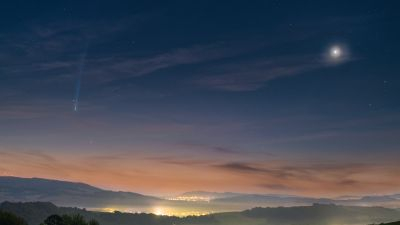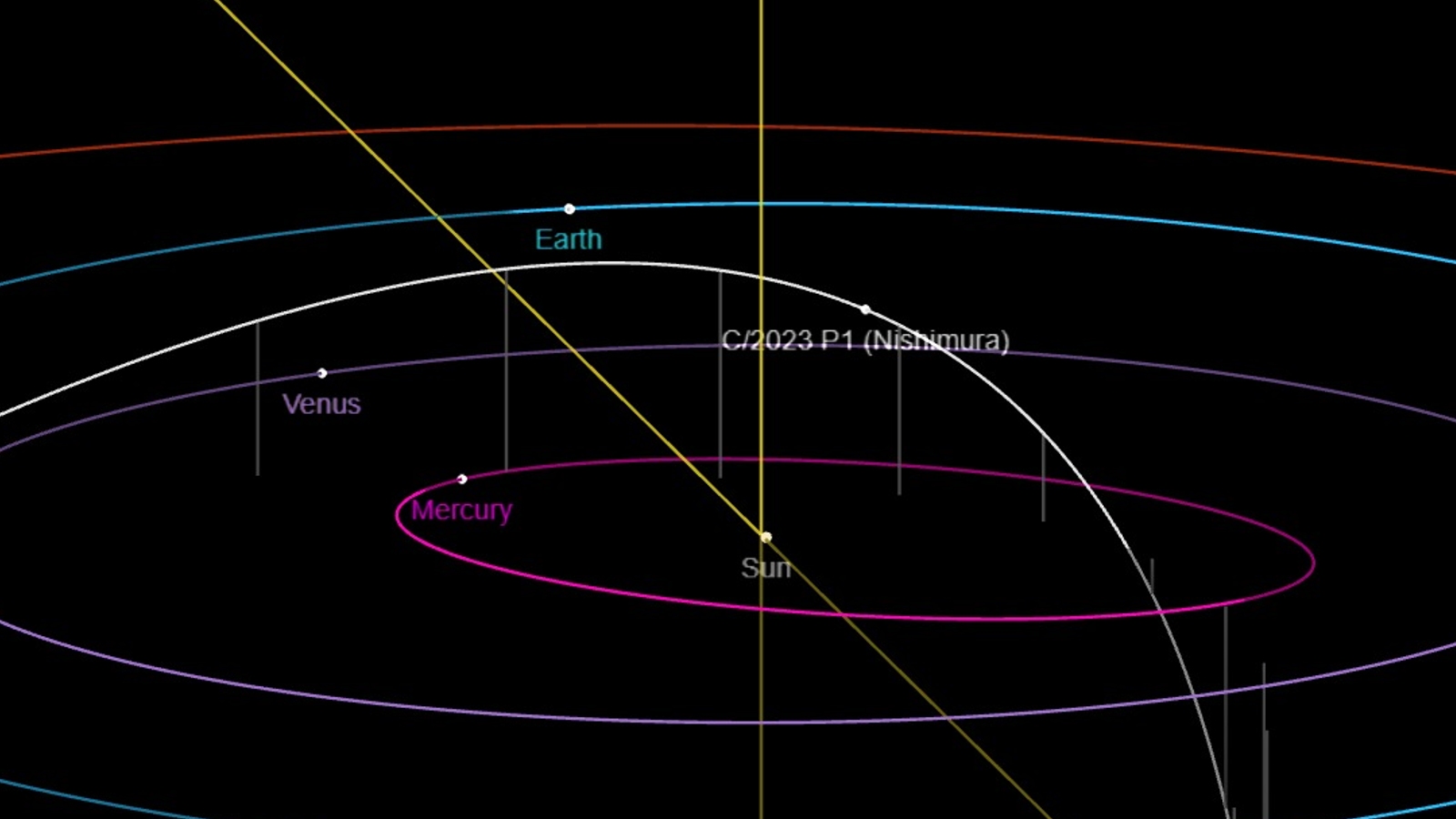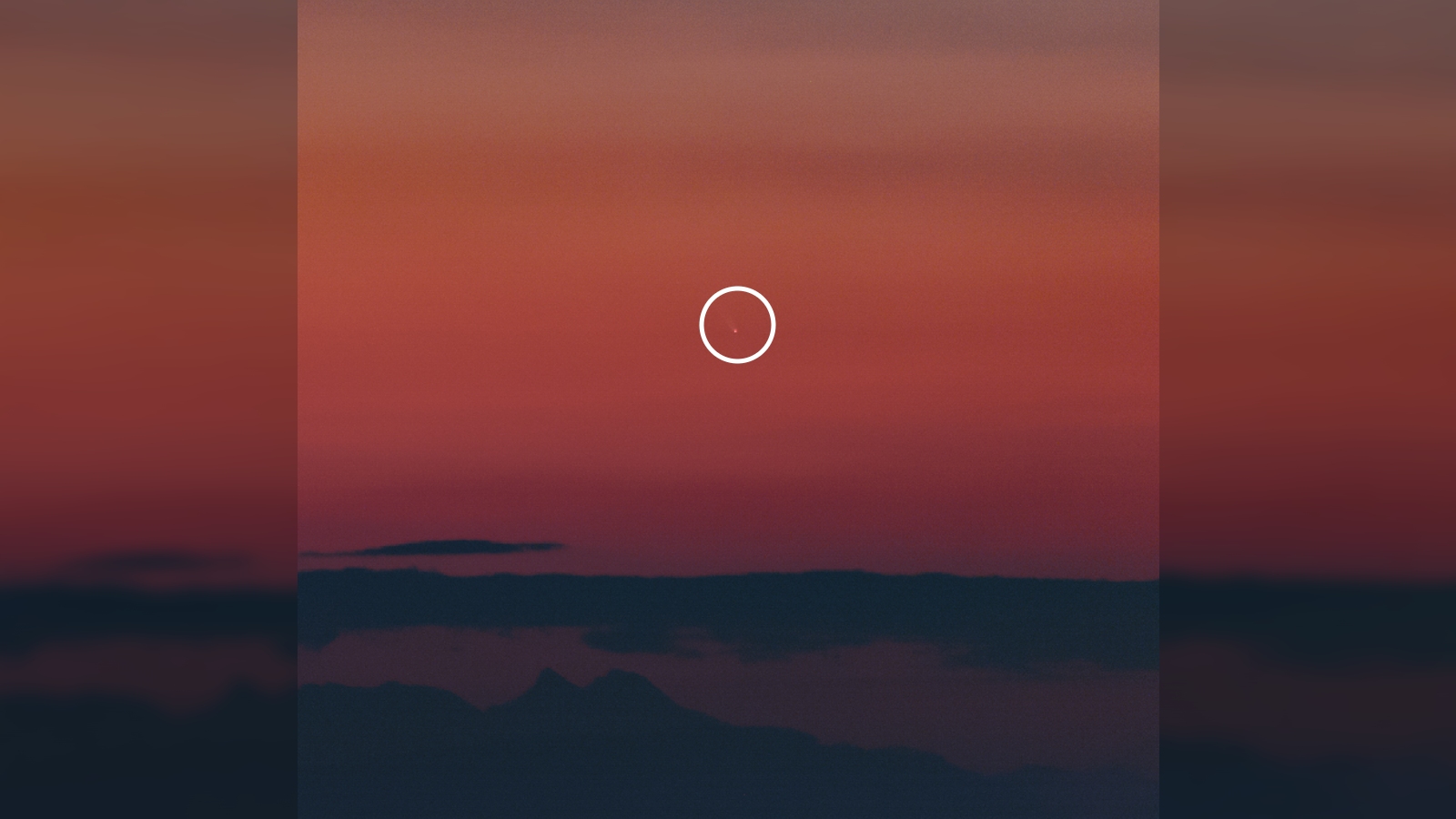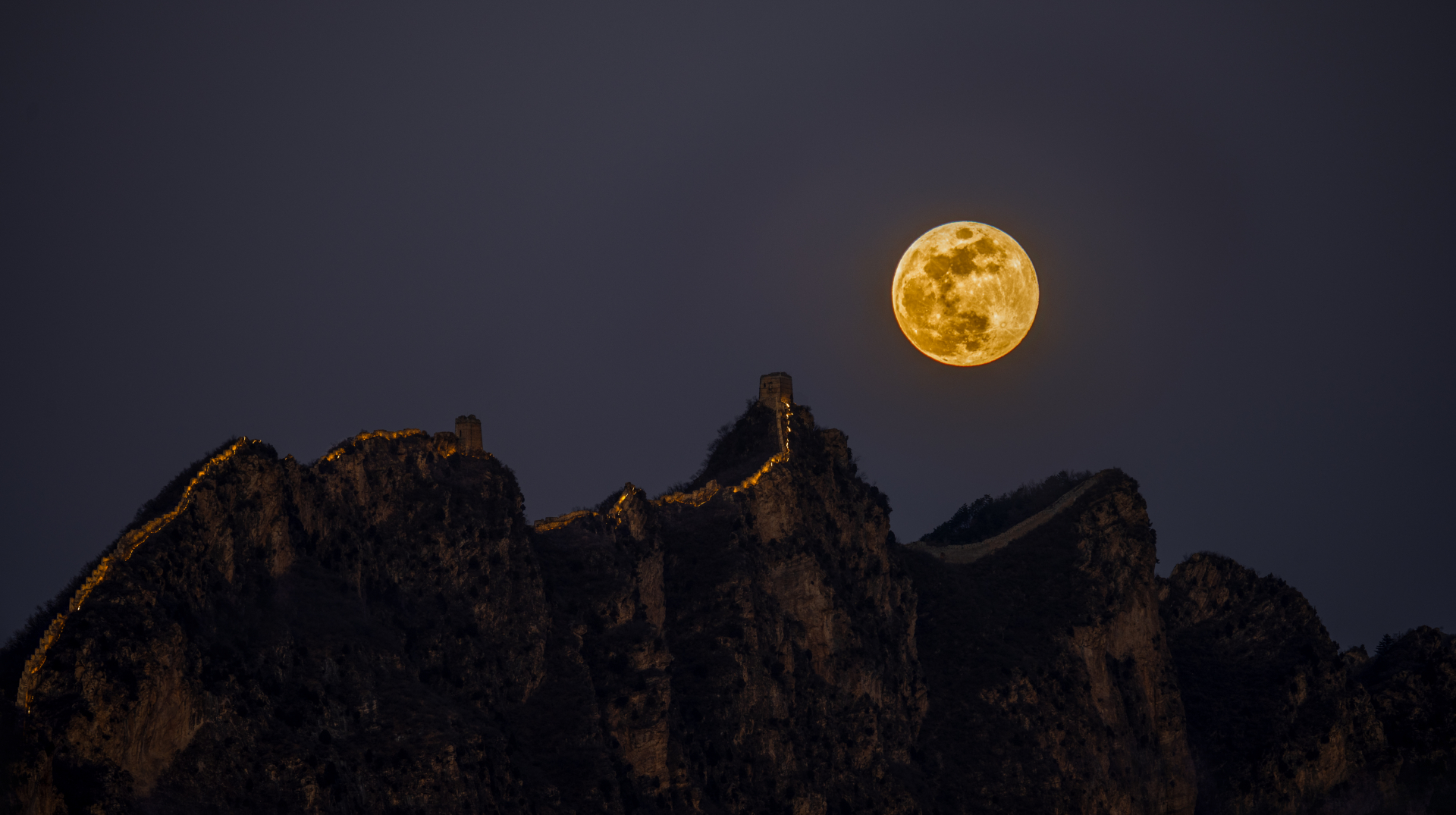Green comet Nishimura survives its superheated slingshot around the sun. Will we get another chance to see it?
Comet Nishimura will brighten over the next week. But is it still visible from Earth?

A recently discovered green comet, named Nishimura, has survived its close encounter with the sun and begun its journey back into the outer reaches of the solar system. Once gone, it won't return for around 430 years. But it could be visible over the next few weeks, depending on where you live.
Comet Nishimura, also known as C/2023 P1, was first spotted falling rapidly toward the sun on Aug. 12 by amateur Japanese astronomer Hideo Nishimura. The icy object has a green glow caused by high levels of dicarbon in its coma, the cloud of gas and dust that surrounds its solid core.
The comet's trajectory initially suggested that it may have been a potential interstellar object, like 'Oumuamua or Comet 2I/Borisov, that was making its first and final trip through the solar system. However, further observation revealed that it actually has an extremely elliptical orbit, which only brings it into the inner solar system every 430 years before slingshotting around the sun and returning to the Oort Cloud — a reservoir of comets and other icy objects beyond the orbit of Neptune.
On Sept. 12, Comet Nishimura made its closest approach to Earth, passing within 78 million miles (125 million kilometers) of the planet, or roughly 500 times the average distance between Earth and the moon. And on Sept. 17, the comet reached perihelion, or the closest point to the sun, when it dipped within 20.5 million miles (33 million km) of our home star.
Related: City-size comet headed toward Earth 'grows horns' after massive volcanic eruption
Getting so close to the sun can be deadly for comets. The increased heat and radiation can cause them to shatter into many smaller pieces. However, Nishimura appears to have emerged mostly unscathed, according to Spaceweather.com.
As Comet Nishimura moves away from the sun and slightly toward Earth, it will become fractionally brighter as more light reflects off its coma, which will have grown slightly from its brush with the sun. But this doesn't necessarily mean we will be able to see it any better.
Breaking space news, the latest updates on rocket launches, skywatching events and more!
The comet's trajectory and close proximity to the sun only make it visible near the horizon shortly before sunrise or shortly after sunset. It's also much dimmer than it was on its approach to Earth, when it became clearly visible to the naked eye. As a result, you need a strong telescope or specialized astrophotography equipment to catch a decent sight of the comet.
Astrophotographer Petr Horalek captured a blurry shot of the comet (shown below) on Sept. 17 above Slovakia's Mount Lysa, shortly after the object reached its closest point to the sun. However, he could not see the comet without his equipment, he told Live Science in an email.
However, if you live in Australia, your chances of being able to catch a glimpse of Nishimura with your own eyes are slightly better over the next week. Between Sept. 20 and Sept. 27, the comet will set around one hour after the sun, the furthest distance away from our home star over the next few weeks. And the increased separation will make it appear brighter to observers in this part of the world.
However, the rest of us may still get another chance to spot the comet later in the year — or perhaps some scattered bits of it.
Some experts believe Nishimura could potentially be the source of the annual Sigma-Hydrids meteor shower, a minor shower that peaks annually in early December, according to the astronomy news site EarthSky. If this is the case, then Nishimura’s passing could cause this year's shower to be much more active and visually stunning than normal. Further observations in December could help confirm or disprove this theory.

Harry is a U.K.-based staff writer at Live Science. He studied Marine Biology at the University of Exeter (Penryn campus) and after graduating started his own blog site "Marine Madness," which he continues to run with other ocean enthusiasts. He is also interested in evolution, climate change, robots, space exploration, environmental conservation and anything that's been fossilized. When not at work he can be found watching sci-fi films, playing old Pokemon games or running (probably slower than he'd like).



